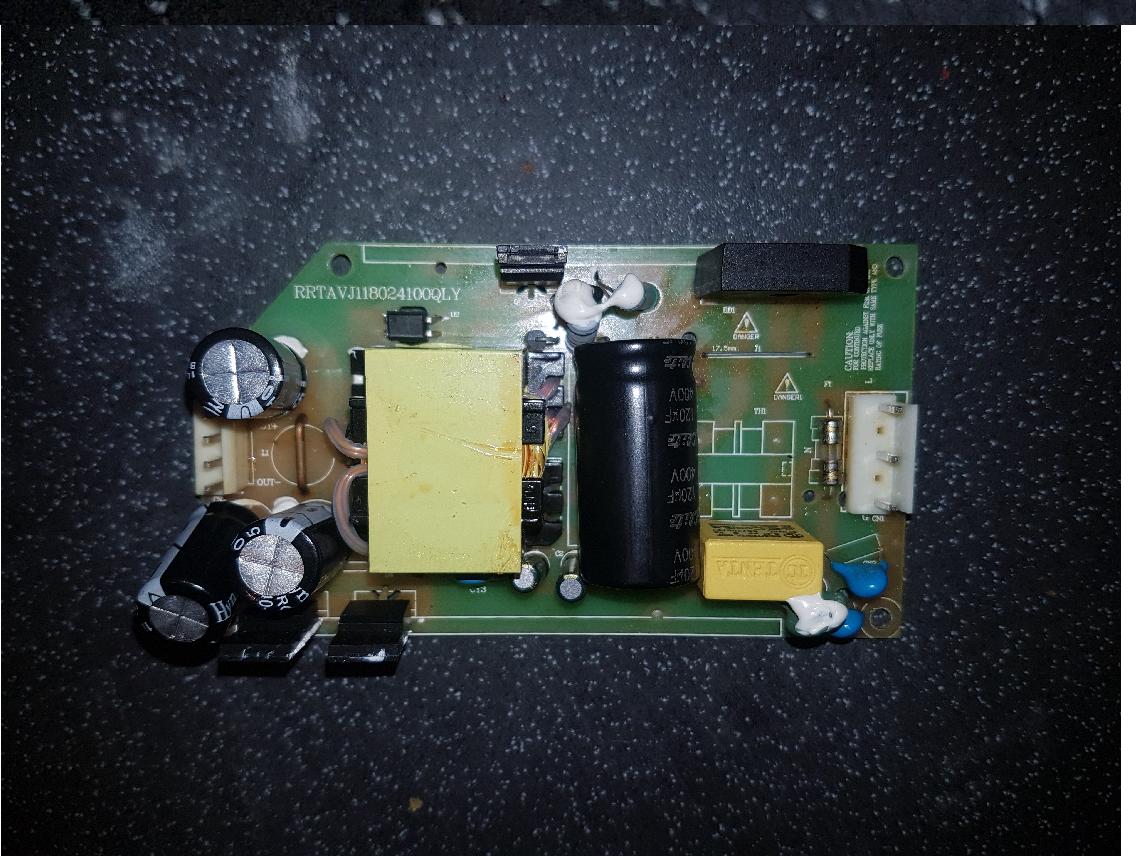I work in a theatre and I'm looking for some guidance on how to solve an issue regarding a 24V power supply in one of my LED lights. The model is a Chauvet SlimPAR QUAD 12 IRC, to be exact, consisting of 4 sets of LED channels(red, green, blue and amber). With budgets as tight as ever there is a renewed interest in getting as much low power LED kit fixed as possible.
The fault first came to our attention when the light began constantly flickering and had a ticking sound emanating from inside, regardless of what output levels we set it to. I have taken it apart and found that some of the electrolytic capacitors within the power supply had bulged and leaked.
After replacing the 3 x 35V 1000uF and 1 x 400V 120uF I now find myself in a position where all colour channels (red, green, blue, amber) work correctly at full output. Once any colour (except red) is dimmed to around <40% of its full output the flicker returns and I hear ticking once again, albeit at a lower level this time.
It has been suggested to me that the issue lays somewhere in the feedback circuit on the secondary side. The replacement capacitors I have used are supposedly "low ESR" but as the issue is still present I am unsure what to investigate next.
Any help or links to further guidance would be appreciated.
Admittedly one of the capacitors has been soldered on a little wonky but the connection is good. I am aware this is a cheap and nasty power supply but unfortunately there is no money for a complete replacement and searches for circuit specs have been unsuccessful. I am tinkering with this as a hobby in an attempt to extend the light's lifetime.
Many thanks!

